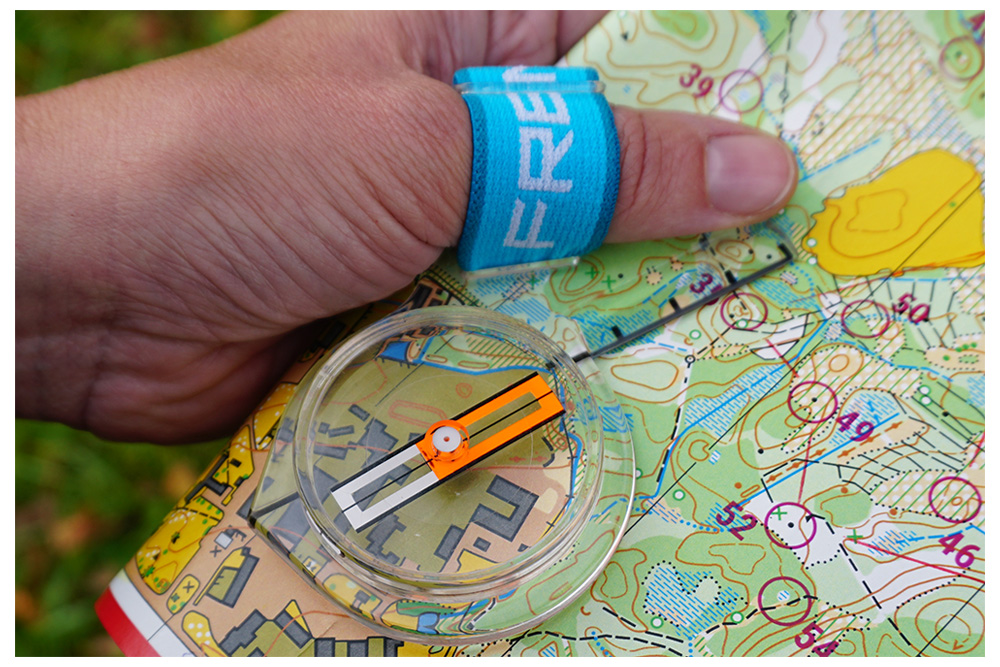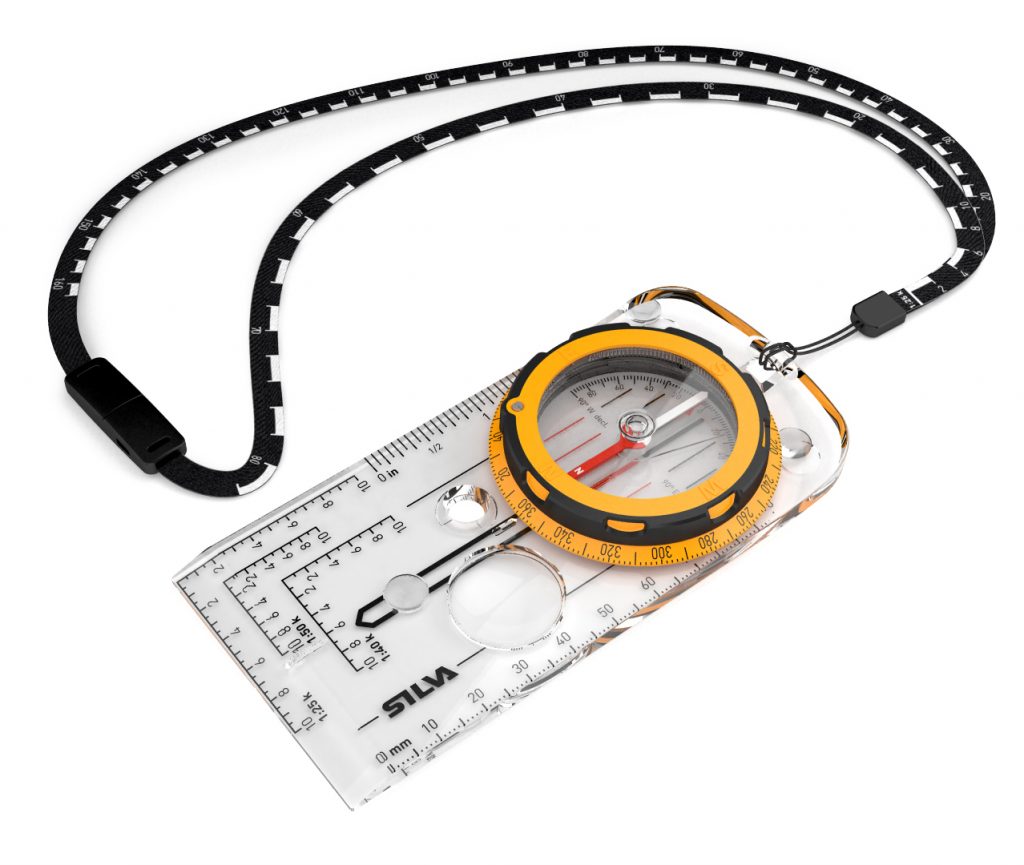beginners often run a white course without a compass. You can normally orientent yourself to your surroundings on a beginner course. That said, it is helpful to quickly know which way is north. There is a wide variety of compasses availabale, that differ in quality, size and price. Some orienteering events and courses offer a possibility to rent or borrow a compass, which might be a good option before buying one, as you can try and see what suits you best.
Thumb compass
A thumb compass functions like a regular compass, but is easier to use in combination with a map, as it is strapped around the user’s thumb while holding the map in the same hand.
The thumb compass is designed to fit naturally your hand and thumb and keep the contact with the map.
Thumb compasses come in left-hand (for right-handed people) and right-hand versions (for left-handed people), with wide and narrow needles. They also feature different designs and functionality – faster/ slower needles, with rotating/ fixed capsule.
Majority of orienteering runners use left-hand version compass, but it might be the case that you feel more natural and comfortable using the right-hand version. So, it pays to think a bit about what would work for you.



